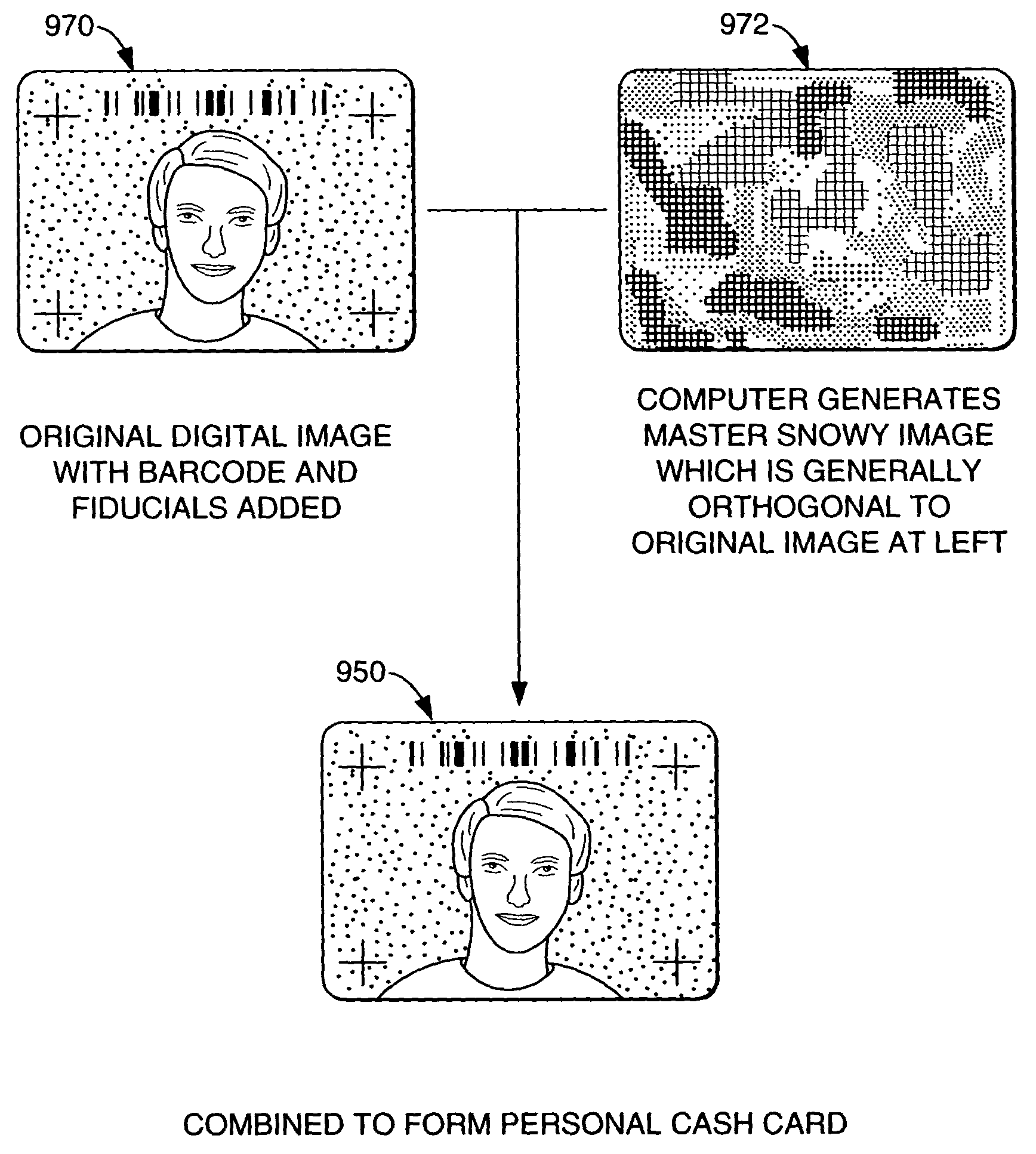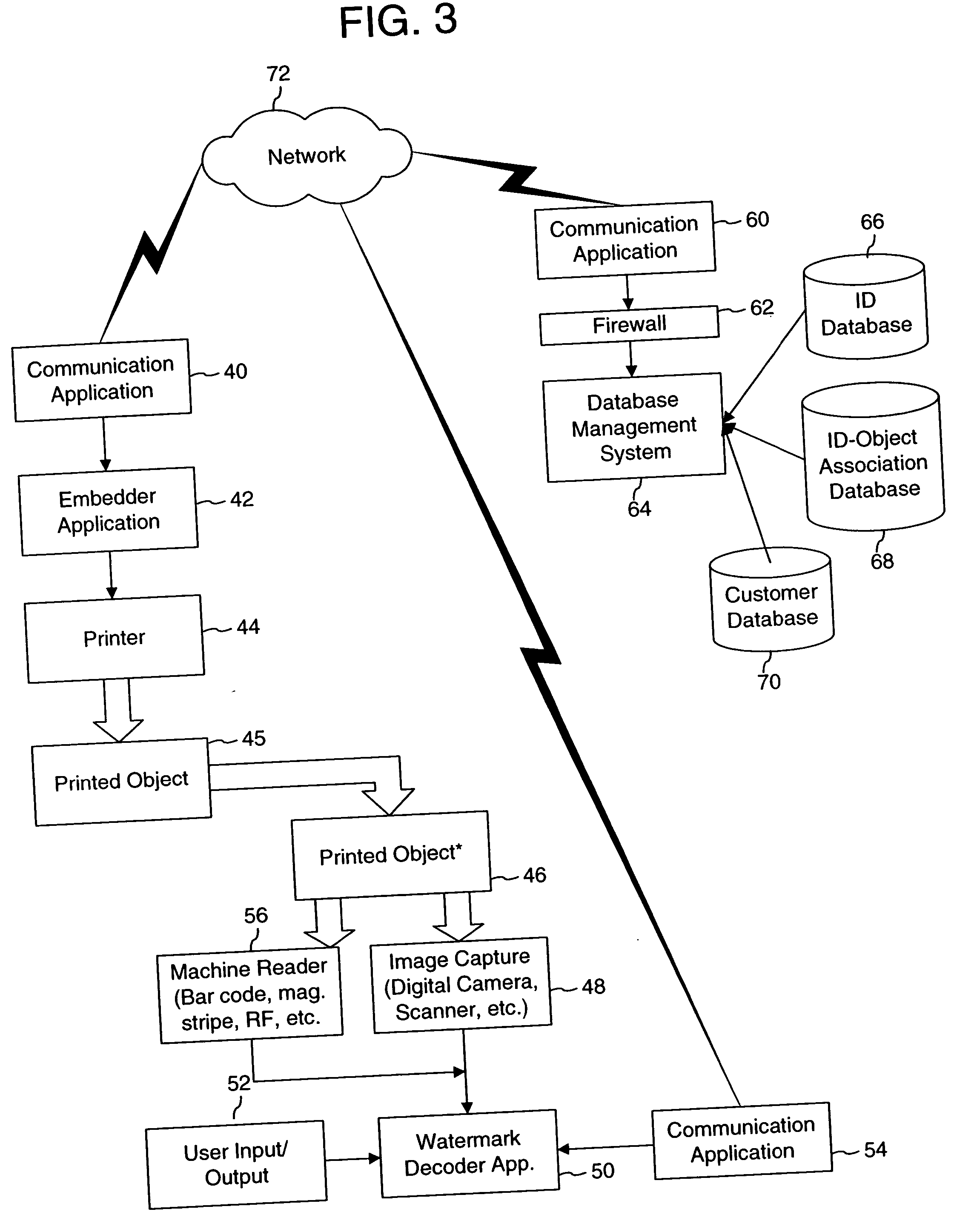Digital authentication with digital and analog documents
a digital and analog document technology, applied in the field of digital authentication with digital and analog documents, can solve the problems of fragmented watermarks that cannot accurately distinguish counterfeit copies from normal transformations, cannot discern the precise alignment of blocks in scanned images relative to blocks in original watermark images, and may only be able to recover the relative location of blocks to each other
- Summary
- Abstract
- Description
- Claims
- Application Information
AI Technical Summary
Benefits of technology
Problems solved by technology
Method used
Image
Examples
Embodiment Construction
s
[0114] The following sections describe how the system may be adapted for a variety of types of printed objects. In each of these cases, copy detection technology, such as fragile watermarks, authentication hashes embedded in the watermark, or special authentication keys used to create the watermark may be used to authenticate the printed object. In addition, the watermark may carry information that is used to access and index information in a database or on a computer network as described above.
[0115] Stocks and Bonds
[0116] The system shown in FIG. 3 can be used to create print stock certificates and bonds with copy detection watermarks to verify their authenticity. In addition, decoding systems can use the identifier embedded into the watermarks on the documents to link to the database, where information for authenticating the document and / or its owner are stored. As title changes, the database can be updated to associated the current owner and other transaction information with t...
PUM
 Login to View More
Login to View More Abstract
Description
Claims
Application Information
 Login to View More
Login to View More - R&D
- Intellectual Property
- Life Sciences
- Materials
- Tech Scout
- Unparalleled Data Quality
- Higher Quality Content
- 60% Fewer Hallucinations
Browse by: Latest US Patents, China's latest patents, Technical Efficacy Thesaurus, Application Domain, Technology Topic, Popular Technical Reports.
© 2025 PatSnap. All rights reserved.Legal|Privacy policy|Modern Slavery Act Transparency Statement|Sitemap|About US| Contact US: help@patsnap.com



